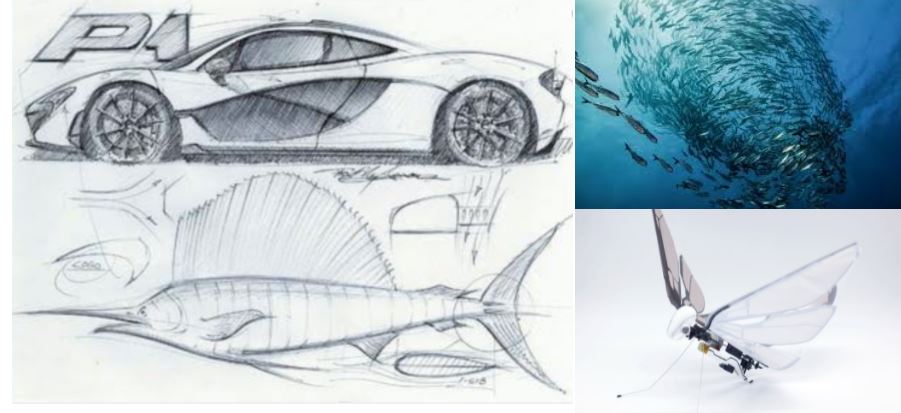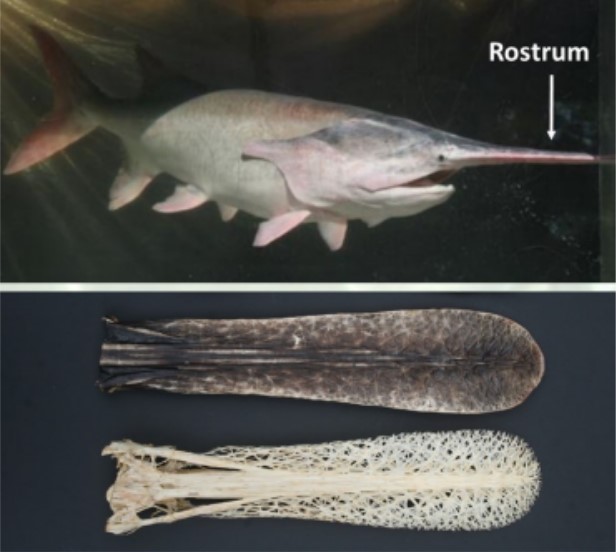Innovation inspired by nature
What is Biomimetics?
Biomimetics is a discipline of research that focuses on improving technology by emulating natural phenomena, with the forms and structures of living things serving as primary sources of inspiration for creating better design solutions. Instead of focusing on what can be retrieved from the products of millions of years of natural evolution, this strategy focuses on what they can learn. The underlying idea is that engineers and designers should focus on the features and designs of biological systems, using them as inspiration for effective, autonomous, renewable, and permanent solutions to challenges that threaten environmental sustainability.

Applications in the automotive industry
Biomimetics is emerging as a powerful technique in the automotive industry for achieving more efficient designs, such as using less energy to reach a given distance, maneuvering due to a bio-inspired aerodynamically efficient shape, or allowing an enhanced force transmission mechanism. We can already see the design applications of biomimetics in the McLaren P1 Supercar, Continental Automotive’s BEE autonomous vehicle. For better evaluation, we can classify the impact on biomimetics into three categories: design, manufacturing & materials, and other subsystems.
DESIGN:
We can see the effects of bio-inspired designs in marine, terrestrial and aerial transportation alike. Biomimetics has been widely used to develop revolutionary vehicle designs, displaying significant promise in enhancing energy efficiency through reduced aerodynamic drag, weight reduction, or both. Given the importance of cargo transportation on roads worldwide and the relatively high amounts of energy spent delivering truck cargo compared to ship and train modals, improving energy efficiency in truck cargo transport would significantly contribute to a more environmentally friendly supply chain.
In the design of aerospace vehicles, scientists have actively tried to adapt wing morphing (the ability to alter the shape of wings to as suited for required flight conditions) to apply it in UAVs. After determining that the airfoil shape determines the vehicle’s lift and drag forces, the main goal was to develop a system that allows for dynamic wing profile adaptation during flight, rather than the current wings, which rely on sophisticated hydraulics and motor systems. This technology has helped reduce fuel consumption, prolong life, and increase the maximum speed by using a system similar to the skeletal-muscular system on wings. Successful unmanned airborne surveillance systems that are suited for extraterrestrial missions have been developed by scientists based on the flight mechanism of insects.

Terrestrial vehicles of all kinds have adapted from nature in their product cycle. For example, McLaren wanted to know more about what makes the sailfish one of the fastest in the sea, so they discovered that the fish’s scales form tiny vortices that create a bubble layer around its body, considerably lowering drag as it swims. This led to the P1 hypercar, which requires a lot of air to keep the combustion and engine cool for maximum performance. The fish scale template was placed inside the ducts that channel air into the P1’s engine, increasing airflow, efficiency, and power. The integration of the structure of kingfishers beak to the nose of bullet trains to reduce the noise and loss, the improvements to bus design based on the Beluga whale’s hydrodynamic shape, etc. are more examples of the same.
MATERIALS & MANUFACTURING
Biomimetics is now used in a variety of applications, primarily in materials with various functions, such as anti-repellant surfaces, adhesive stamps, anti-abrasive coating, glue, and rubber, as well as medical applications, ceramics, color-changing materials, light-weight strong materials, thermal isolation materials, and so on. Due to the heterogeneity of fiber-reinforced composites, the stress-strain fields associated with failure are nonuniform. Damage can be caused by various factors, including impact, excessive loading, and compression, all of which cause high strain and microdamage inside the laminate.

There have been several studies on how a hierarchical layup of the tree branch–trunk joint and the joint of a bird bone can improve the performance of a composite T-joint. Scientists have used the biological design of tree branches embedded into the center of the trunk to address aerospace joints, because aircrafts are typically assembled with thousands of joints, which constitute the weakest regions of the aircraft. The mineralized dactyl club of the smashing predator stomatopod, which can endure thousands of high-velocity strikes delivered to its prey, inspired the construction of impact-resistant composites. The rostrum of the North American paddle fish is an excellent example of an efficient natural composite construction. The rostrum is made up of a mix of hard and soft cartilage, with the soft material running down the middle and being surrounding by a hard cartilage mesh.
SMART & DRIVERLESS CARS
Nissan’s automotive designers were trying to figure out how to create the ideal anti-collision vehicle in 2009. The idea came from an odd source: schools of fish that move in perfect sync by staying close together while maintaining a safe stopping distance. Nissan dwelled deep into this, developing safety systems like Intelligent Brake Assist and Forward Collision Warning that are still in use today in Nissan vehicles. Continental’s BEE concept for future self-driving automobiles is described as “stress-free, safe, and environmentally friendly urban transportation.” The automobile, which stands for Balanced Economy Ecology, can connect with other BEE vehicles in the same way as a swarm of bumblebees can. In the Nissan 2018 Rogue, the human driver must remain focused on the task at hand. The driver’s hands must stay on the steering wheel, and the system will remind them to nudge the wheel from time to time to demonstrate that they (the human driver) are still paying attention to the road. Surprisingly, the foundation of this technique was developed by research into zebrafish schools and migratory bird flocks. The Tesla Autopilot, Mercedes-Benz DistronicPlus, and Cadillac SuperCurise all have adaptive cruise controls similar to the Tesla Autopilot.
References:
- Biomimetics and Composite Materials toward Efficient Mobility: A Review Joel Boaretto 1,2, Mohammad Fotouhi 3 , Eduardo Tende 2,4, Gustavo Francisco Aver 5 , Victoria Rafaela Ritzel Marcon 1 , Guilherme Luís Cordeiro 1 , Carlos Pérez Bergmann 2 and Felipe Vannucchi de Camargo 1,2,*
- Numerical Simulation of Biological Structures Numerical Simulation of Biological Structures Paddlefish Rostrum Final report
- https://www.researchgate.net/publication/334519590_Numerical_Simulation_of_Biological_Structures_Numerical_Simulation_of_Biological_Structures_Paddlefish_Rostrum_Final_report


